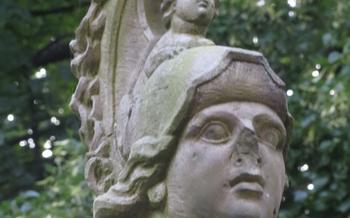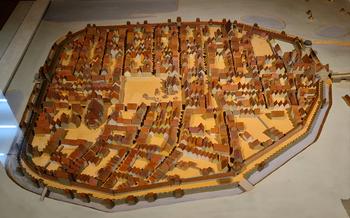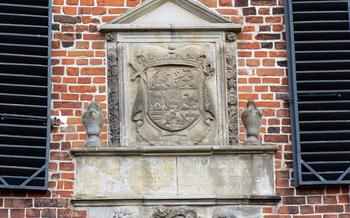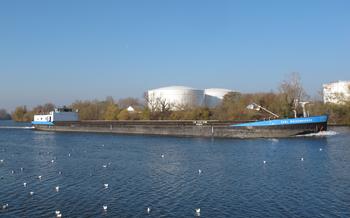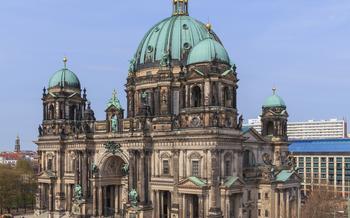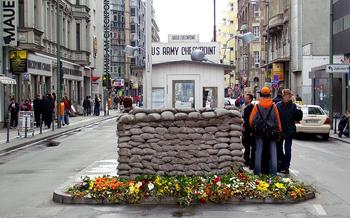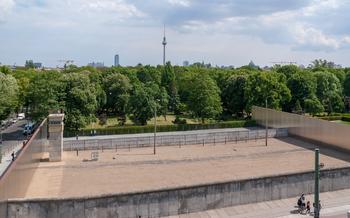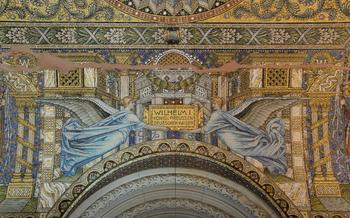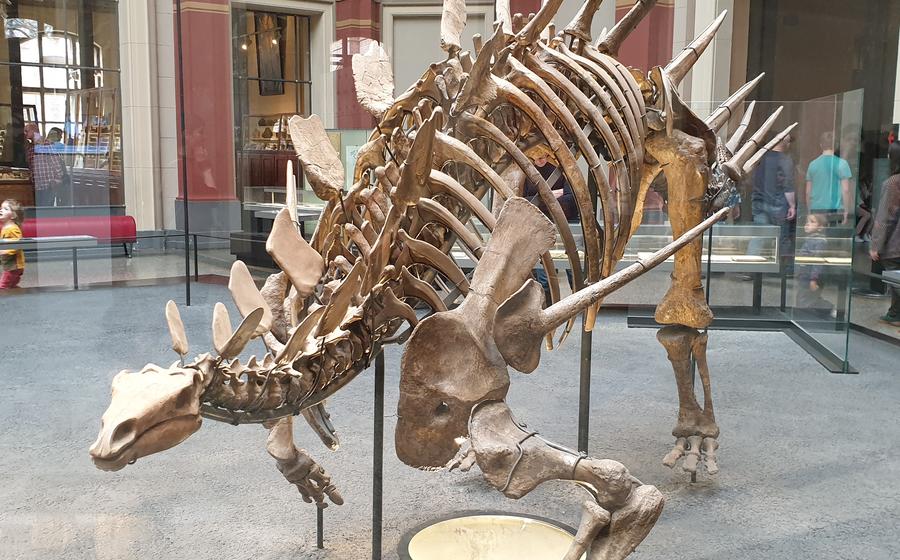
The Natural History Museum
- A Journey Through Time and Nature: The Natural History Museum in Berlin
- Architectural Marvel: A Masterpiece of Neo-Renaissance Design
- Dinosaurs, Fossils, and Evolution: Unraveling Earth's Ancient Past
- The Wonders of the Animal Kingdom: A Diverse Collection
- Journey into the Microscopic Realm: The World of Insects and More
- Minerals and Gems: A Dazzling Display of Earth's Treasures
- Human Evolution and Cultural Heritage: Exploring Our Roots
- Interactive Learning and Hands-On Experiences: Engaging All Senses
- Temporary Exhibitions: A Window into the Latest Discoveries
- Guided Tours and Workshops: Delving Deeper into the Collections
- Museum Shop: Souvenirs and Educational Resources
- Accessibility and Inclusivity: Ensuring Equal Access for All
- Planning Your Visit: Essential Information for a Smooth Experience
- Food and Refreshments: On-Site Options for a Nourishing Break
- Insider Tip: Uncovering Hidden Gems and Local Favorites
A Journey Through Time and Nature: The Natural History Museum in Berlin
For over 100 years, the Natural History Museum in Berlin has stood as a testament to the wonders of our planet. Step into this realm of discovery and embark on a journey that spans billions of years, from the origins of life to the intricate diversity of Earth's creatures. This iconic institution is dedicated to preserving and showcasing the natural heritage of our world, inspiring awe and instilling a deep appreciation for the wonders that surround us.
Home to over 30 million specimens, the museum's mission is to advance scientific knowledge, promote public understanding of the natural world, and foster a sense of responsibility for the environment. With its vast collection, state-of-the-art exhibits, and engaging educational programs, the Natural History Museum offers an unparalleled experience for visitors of all ages.
Among the must-see exhibits are awe-inspiring dinosaur fossils, including the renowned Brachiosaurus brancai, a colossal sauropod that stretches over 13 meters in length. Explore the mesmerizing world of insects, with its vibrant colors and intricate adaptations, and delve into the captivating stories of human evolution, tracing our lineage back to our earliest ancestors.
To make the most of your visit, plan ahead and arrive early to avoid crowds. Allow plenty of time to wander through the exhibits, as there is much to discover and appreciate. Guided tours and workshops are available for those seeking a deeper dive into specific topics or who prefer a structured experience.
Architectural Marvel: A Masterpiece of Neo-Renaissance Design
The Natural History Museum in Berlin stands as a testament to the architectural grandeur of the late 19th century. Constructed between 1889 and 1899, the museum's design was heavily influenced by the Neo-Renaissance style, which sought to revive the architectural principles of the Italian Renaissance.
Historical Background
The museum's construction was part of a larger urban development plan for Berlin, which aimed to create a cultural and scientific district in the city center. The museum's location, adjacent to the Zoological Garden, was carefully chosen to create a synergistic relationship between the two institutions.
Unique Architectural Features
The museum's facade is adorned with intricate carvings, sculptures, and decorative elements that showcase the skill and artistry of its creators. The grand entrance, flanked by two imposing towers, leads visitors into a spacious foyer with a stunning glass dome, which allows natural light to flood the interior.
Symbolism and Significance
The museum's architecture not only reflects the prevailing artistic style of its time but also carries symbolic significance. The building's imposing size and elaborate ornamentation were intended to convey the importance and prestige of the scientific endeavors housed within.
Interesting Anecdotes
During the construction of the museum, a time capsule was buried beneath the foundation stone. The capsule contained various artifacts, including coins, newspapers, and photographs, representing the cultural and scientific achievements of the era.
The museum's dome, a remarkable feat of engineering, was constructed using a revolutionary technique involving prefabricated iron ribs. This innovative approach allowed for a lightweight and durable structure that maximized natural light.
Dinosaurs, Fossils, and Evolution: Unraveling Earth's Ancient Past
The Natural History Museum in Berlin houses an impressive collection of dinosaur fossils and exhibits that transport visitors back to a time when these majestic creatures roamed the Earth. From towering skeletons of sauropods to the delicate remains of feathered dinosaurs, the museum oferece a glimpse into the diversity and evolution of these prehistoric giants.
One of the highlights of the dinosaur collection is the Brachiosaurus brancai, an enormous sauropod that stands over 13 meters tall and 22 meters long. This magnificent specimen is one of the most complete dinosaur skeletons in the world, and its imposing size and detailed preservation make it a must-see for any visitor.
Beyond dinosaurs, the museum also showcases fossils from various geological eras, including the Triassic, Jurassic, and Cretaceous periods. These fossils provide a comprehensive overview of the evolution of life on Earth, from the earliest single-celled organisms to the complex diversity of plants and animals that we see today.
The museum's paleontological research team is actively involved in studying and classifying new fossil specimens, contributing to our understanding of Earth's ancient past. Visitors can learn about their work through interactive exhibits and displays that showcase the latest fossil discoveries and research methodologies.
The Wonders of the Animal Kingdom: A Diverse Collection
The Natural History Museum in Berlin houses a remarkable collection of animals from around the world, providing visitors with an immersive journey into the diversity and wonders of the animal kingdom. Mammals, birds, and reptiles from various habitats and ecosystems are showcased in interactive exhibits and displays that bring these creatures to life.
Mammals: Encounter the majestic African elephant, the playful orangutan, and the elusive snow leopard. Learn about the unique adaptations of mammals, such as their fur, teeth, and specialized senses, that allow them to thrive in diverse environments. Discover the fascinating world of primates, including gorillas, chimpanzees, and lemurs, and gain insights into their complex social structures and behaviors.
Birds: Marvel at the vibrant colors and intricate plumage of birds from tropical rainforests, soaring eagles, and elegant swans. Explore the adaptations of birds for flight, including their lightweight bones, streamlined bodies, and specialized feathers. Learn about the incredible migrations undertaken by some bird species, covering vast distances in search of food and breeding grounds.
Reptiles: Encounter the captivating world of reptiles, including snakes, lizards, turtles, and crocodiles. Discover the diverse habitats they inhabit, from deserts to rainforests, and their unique adaptations for survival. Witness the mesmerizing dance of the king cobra, the stealthy movements of the chameleon, and the power of the saltwater crocodile.
The Natural History Museum in Berlin offers an unparalleled opportunity to explore the wonders of the animal kingdom and gain a deeper appreciation for the incredible diversity of life on Earth. Through interactive displays, educational exhibits, and hands-on experiences, visitors of all ages can embark on a journey of discovery and marvel at the beauty and complexity of the natural world.
Journey into the Microscopic Realm: The World of Insects and More
Venture into the fascinating world of insects and other microscopic organisms at the Natural History Museum in Berlin. Discover an extensive collection of insects, including butterflies, beetles, and ants, showcasing the incredible diversity of these tiny creatures. Learn about their intricate life cycles, remarkable adaptations, and ecological significance through interactive exhibits and displays. Explore the role of insects in pollination, decomposition, and food chains, gaining a deeper understanding of their crucial contributions to ecosystems. Delve into the microscopic realm and uncover the hidden wonders of organisms invisible to the naked eye.
Minerals and Gems: A Dazzling Display of Earth's Treasures
The Natural History Museum in Berlin boasts an impressive collection of minerals and gemstones, showcasing the diverse beauty and scientific significance of these natural wonders. From sparkling diamonds and rubies to rare minerals with unique properties, the museum's exhibits offer a journey into the world of Earth's hidden treasures.
Visitors can marvel at the variety of minerals, each with its own distinct color, shape, and composition. Learn about the geological processes that lead to their formation, and explore their physical and chemical properties. Discover the fascinating stories behind precious gemstones, from their historical significance to their use in jewelry and art.
The museum also highlights the cultural and historical importance of minerals. Precious stones have been revered for centuries, symbolizing power, wealth, and status. Visitors can trace the journey of gemstones throughout history, from their discovery in mines to their transformation into exquisite pieces of jewelry and decorative objects.
Beyond their aesthetic appeal, minerals play a crucial role in various scientific fields. They are essential components of rocks, providing insights into the Earth's geological history. Minerals are also used in a wide range of industries, from construction and manufacturing to electronics and medicine. The museum's exhibits explore these applications, demonstrating the practical importance of minerals in our daily lives.
The museum's mineral collection is not just a display of beautiful objects but also a valuable resource for scientific research and education. Researchers study the minerals to understand their formation, composition, and properties, contributing to our knowledge of the Earth's geological processes. The museum's educational programs and workshops provide opportunities for visitors of all ages to learn about minerals, their significance, and their impact on our world.
Human Evolution and Cultural Heritage: Exploring Our Roots
The Natural History Museum in Berlin not only delves into the natural world but also explores the fascinating story of human evolution and cultural heritage. Through engaging exhibits, visitors can embark on a journey that traces the origins of humankind and showcases the rich diversity of human cultures from around the world.
Exhibits on human evolution provide insights into our ancestors and the remarkable journey that led to the emergence of modern humans. Fossils, artifacts, and interactive displays illustrate the evolutionary processes that shaped our species, from early hominids to the development of complex societies. Visitors can explore the intricate relationship between humans and their environment, gaining a deeper understanding of how our ancestors adapted to changing conditions and shaped the world around them.
The museum also celebrates the cultural heritage of diverse human populations, showcasing artifacts and traditions from various regions. Visitors can marvel at intricate textiles, traditional costumes, and art objects that reflect the creativity and ingenuity of human societies. Exhibits on cultural practices, rituals, and beliefs provide a glimpse into the rich tapestry of human diversity, fostering appreciation for the interconnectedness of cultures across time and space.
Through its focus on human evolution and cultural heritage, the Natural History Museum in Berlin offers a comprehensive exploration of the human experience. Visitors gain a deeper understanding of our origins, our shared humanity, and the remarkable diversity that characterizes our species.
Interactive Learning and Hands-On Experiences: Engaging All Senses
The Natural History Museum in Berlin is not just a place to admire exhibits from behind glass cases; it's an interactive playground that engages all your senses. Throughout the museum, you'll find interactive exhibits and learning stations that allow you to touch, feel, and experiment with various scientific concepts.
One of the highlights is the "Touch and Feel" exhibit, where you can get up close and personal with fossils, minerals, and animal specimens. You can run your fingers over the rough texture of a dinosaur bone, marvel at the intricate details of a seashell, or feel the soft fur of a taxidermied animal.
For a more hands-on experience, sign up for one of the museum's educational programs or workshops. These programs are designed for visitors of all ages and interests, from children to adults. You can learn about everything from the evolution of life on Earth to the behavior of insects.
The museum also offers guided tours that provide a deeper dive into the collections. These tours are led by knowledgeable museum educators who can answer your questions and share fascinating insights about the exhibits.
Whether you're a curious child or an eager learner, the Natural History Museum in Berlin has something for everyone. Its interactive exhibits and educational programs make it a fun and engaging place to learn about the natural world.
Temporary Exhibitions: A Window into the Latest Discoveries
The Natural History Museum in Berlin is renowned for its extensive permanent collections, but it also offers a dynamic array of temporary exhibitions that showcase cutting-edge research and the latest scientific discoveries. These exhibitions often feature collaborations with leading research institutions and experts from around the world.
Temporary exhibitions provide an opportunity for visitors to delve into specific topics in greater depth and gain insights into the latest advancements in various scientific fields. They cover a wide range of subjects, from groundbreaking paleontological discoveries to the intricate relationships between humans and the environment.
One of the highlights of the temporary exhibition program is the "Science Gallery Berlin," a unique space dedicated to showcasing innovative and interdisciplinary projects that explore the intersection of science, art, and technology. These exhibitions often feature interactive installations, thought-provoking artworks, and hands-on activities that engage visitors of all ages.
By presenting temporary exhibitions, the Natural History Museum remains at the forefront of scientific discovery and offers visitors a glimpse into the future of scientific research. These exhibitions provide a platform for scientists to share their work with the public and foster a deeper understanding of the natural world and our place within it.
Guided Tours and Workshops: Delving Deeper into the Collections
To elevate your museum experience, consider joining one of the guided tours tailored to various interests and age groups. Knowledgeable guides will lead you through the exhibits, providing expert insights and captivating stories that bring the collections to life.
For a more immersive experience, sign up for a hands-on workshop or educational program specifically designed for students. These interactive sessions offer a unique opportunity to delve deeper into specific topics, engage in hands-on activities, and interact with museum professionals.
If you crave an exclusive glimpse behind the scenes, book a behind-the-scenes tour. These tours provide rare access to areas of the museum not typically open to the public, allowing you to discover the inner workings of the institution and gain insights into the preservation and research conducted by museum staff.
Whether you're a history buff, a science enthusiast, or simply seeking a deeper understanding of the natural world, the Natural History Museum offers an array of guided tours and workshops to cater to your interests and enhance your visit.
Museum Shop: Souvenirs and Educational Resources
The Natural History Museum in Berlin houses a well-stocked museum shop that offers a wide range of souvenirs, educational materials, and scientific toys for visitors of all ages. Whether you're looking for a unique gift to remember your visit, a book to deepen your knowledge of natural history, or a fun and educational toy for your child, you're sure to find something to suit your needs.
The shop features a variety of souvenirs, including postcards, magnets, keychains, and plush toys featuring the museum's iconic exhibits. For those who want to learn more about the museum's collections and research, there is a selection of books, guides, and scientific journals available for purchase. And for the budding scientists in your family, the shop offers a range of educational toys and games that encourage exploration and discovery.
By making a purchase at the museum shop, you not only take home a memento of your visit but also support the museum's mission to promote scientific research and education. The revenue generated from the shop helps fund ongoing exhibitions, educational programs, and research initiatives, ensuring that the museum continues to be a valuable resource for visitors and researchers alike.
Accessibility and Inclusivity: Ensuring Equal Access for All
The Natural History Museum in Berlin is committed to creating an inclusive and welcoming environment for all visitors, regardless of their abilities or backgrounds. Accessibility features include barrier-free access for visitors with disabilities, including ramps, elevators, and accessible restrooms. Audio guides and sign language interpretation are available for those who need them, and the museum offers inclusive educational programs and resources for visitors of all ages and abilities. By prioritizing accessibility and inclusivity, the museum strives to ensure that everyone has the opportunity to explore and learn from its vast collections and exhibits.
Planning Your Visit: Essential Information for a Smooth Experience
To ensure a smooth and enriching visit to the Natural History Museum in Berlin, planning ahead is crucial.
Food and Refreshments: On-Site Options for a Nourishing Break
A visit to the Natural History Museum can be both educational and exhausting. To keep your energy levels up and make the most of your experience, the museum offers a variety of dining options to cater to different tastes and preferences.
The museum's cafeteria, located on the ground floor, is a popular choice for a quick and convenient meal. It offers a range of hot and cold dishes, including sandwiches, salads, soups, and snacks. There are also vending machines for drinks and snacks throughout the museum.
For a more leisurely dining experience, the museum's restaurant, located on the top floor, offers a stunning view of the city skyline. The menu features a selection of regional and international dishes, as well as a variety of desserts. Reservations are recommended, especially during peak hours.
If you prefer to bring your own food, there are designated picnic areas outside the museum where you can enjoy a packed lunch surrounded by nature. Please note that food and drinks are not allowed inside the exhibition halls.
To enhance your museum experience, consider trying some of the local delicacies. Berlin is famous for its currywurst, a grilled sausage served with a curry-ketchup sauce. You can also find traditional German dishes like schnitzel, bratwurst, and sauerkraut at nearby restaurants.
By planning your meals in advance, you can ensure that you have the energy to explore the museum's vast collection and make the most of your visit.
Insider Tip: Uncovering Hidden Gems and Local Favorites
As you explore the Natural History Museum, keep an eye out for hidden gems that often go unnoticed by casual visitors. One such spot is the Biodiversity Wall, located on the ground floor. This interactive display showcases a stunning array of plant and animal specimens from around the world, inviting you to discover the incredible diversity of life on Earth.
For a unique perspective on the museum's collection, head to the Insectarium, located in the basement. This hidden treasure trove houses an extensive collection of insects and other invertebrates, providing a fascinating glimpse into the world of these often-overlooked creatures.
To truly immerse yourself in the local culture, venture beyond the museum walls and explore the vibrant neighborhood of Mitte. Just a short walk away, you'll find a plethora of charming cafes, independent boutiques, and historical landmarks. Be sure to sample some of the local delicacies, such as the famous Currywurst or a refreshing Berliner Weisse beer.
To avoid the crowds and enhance your overall experience, consider visiting the museum during the off-season (November to March) or on a weekday. This will allow you to explore the exhibits at a more leisurely pace and engage with the museum staff for personalized insights.
